Santa Fe Trail (film)
6.2 /10 1 Votes
Initial DVD release January 1, 2003 Duration Language English | 6.3/10 IMDb Genre Adventure, Biography, Drama Country United States | |||||||||||||||||||||||||||||||||
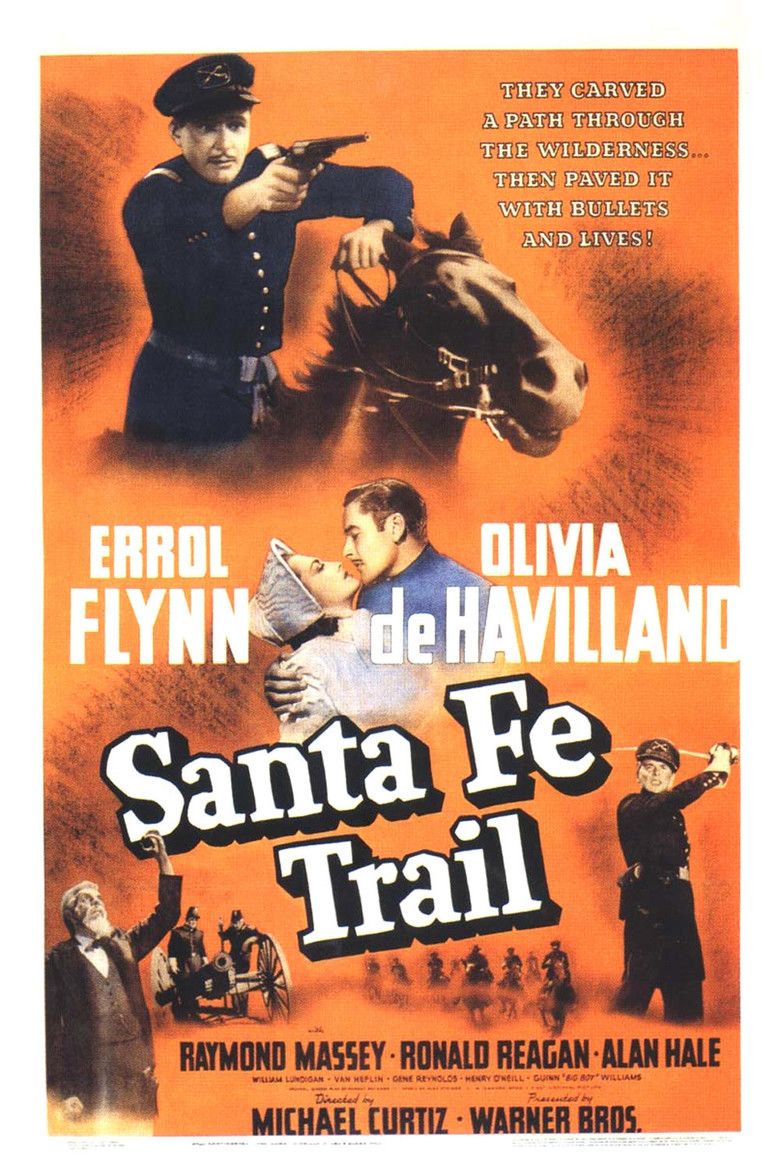 | ||||||||||||||||||||||||||||||||||
Release date December 28, 1940 (1940-12-28) (USA)1947 (France) Cast (Jeb Stuart), (Kit Carson Holliday (as Olivia De Havilland)), Alan Hale (Tex Bell), (George Custer), John Litel (Martin), (Rader)Similar movies Mad Max: Fury Road , Interstellar , Fury , The Hunger Games: Mockingjay - Part 1 , Blackhat , Mission: Impossible – Ghost Protocol Tagline Where the railroad and civilization ended, the Sante Fe Trail began! | ||||||||||||||||||||||||||||||||||
Santa fe trail 1940 official trailer errol flynn ronald reagan western movie hd
Santa Fe Trail is a 1940 American western film directed by Michael Curtiz and starring Errol Flynn, Olivia de Havilland, Raymond Massey and Ronald Reagan. Written by Robert Buckner, the film is about the abolitionist John Brown and his fanatical attacks on slavery as a prelude to the American Civil War. Subthemes include J.E.B. Stuart and George Armstrong Custer as they duel for the hand of Kit Carson Holliday.
Contents
- Santa fe trail 1940 official trailer errol flynn ronald reagan western movie hd
- Santa fe trail 1940
- Plot
- Cast
- Depictions
- Production
- Release
- Box office
- Vitasound
- Availability and public domain status
- References
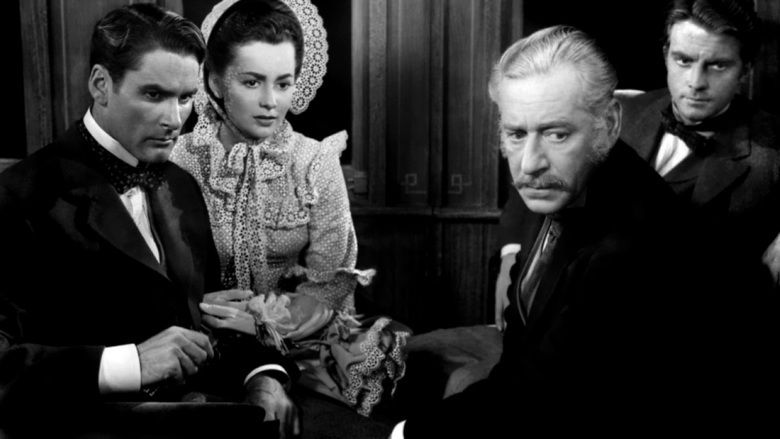
The film was one of the top-grossing films of the year, and the seventh Flynn–de Havilland collaboration. The film also has almost nothing to do with its namesake, the famed Santa Fe Trail, except that the trail started in Missouri and the railroad could be built only after the Army drove Brown out of Kansas.
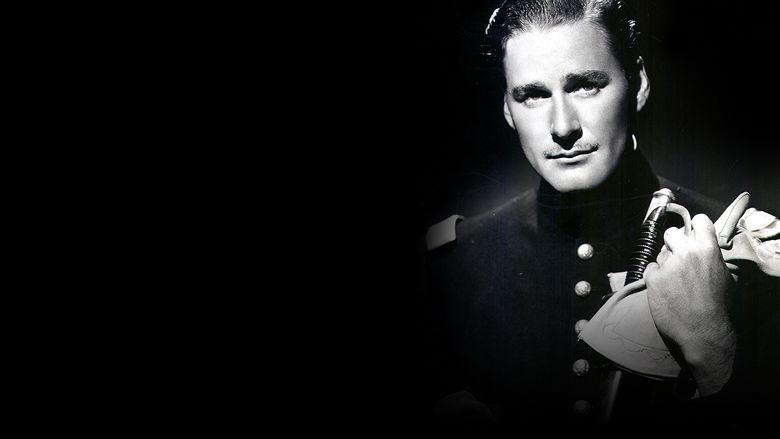
The outdoor scenes were filmed at the Lasky Movie Ranch in the Lasky Mesa area of the Simi Hills in the western San Fernando Valley. One can visit the film location site, now in the very large Upper Las Virgenes Canyon Open Space Preserve (a.k.a. Ahmanson Ranch), with various trails to the Lasky Mesa locale.
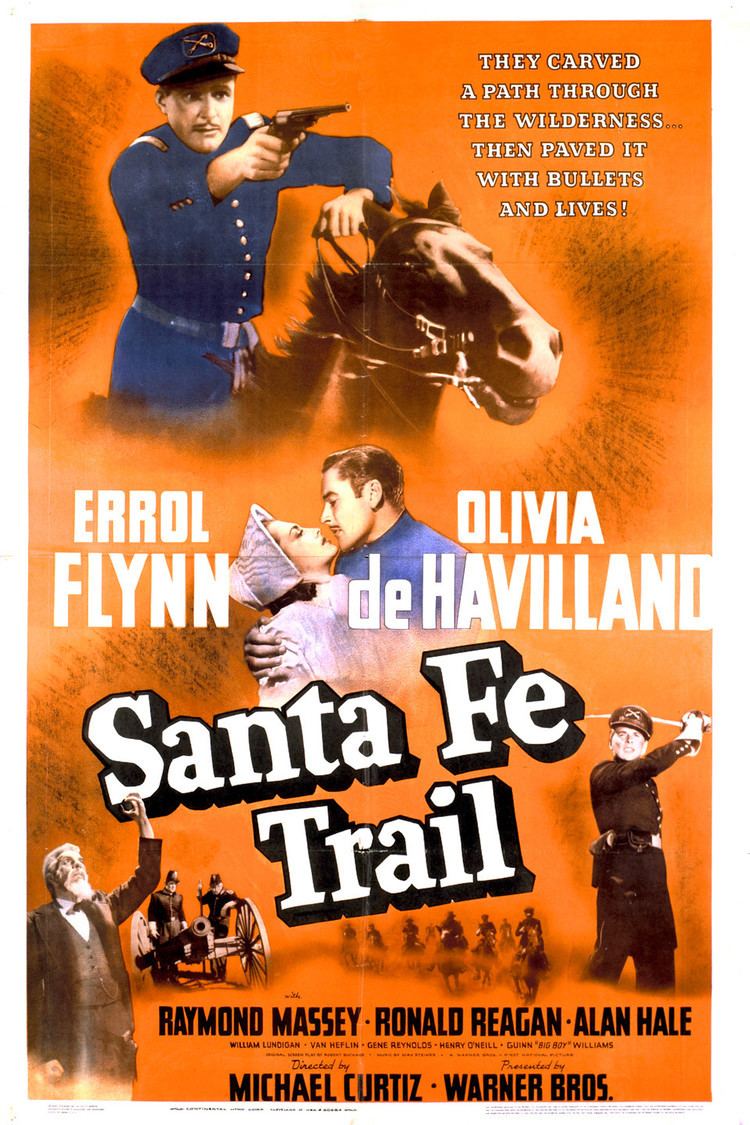
Santa fe trail 1940
Plot
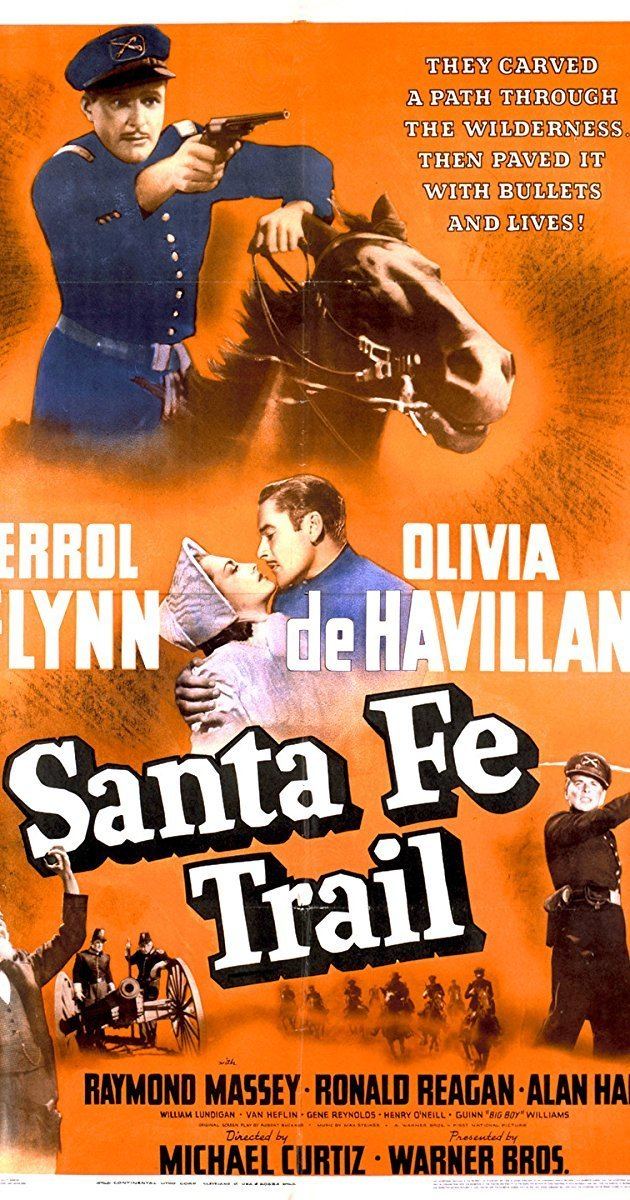
At the West Point Military Academy in 1854, the cadet Carl Rader (an agent of John Brown) (Van Heflin), is dishonorably discharged for spreading anti-slavery pamphlets. His classmates Jeb Stuart (Errol Flynn) and George Custer (Ronald Reagan) become second lieutenants and are posted to Fort Leavenworth, Kansas Territory, the most dangerous duty in the army—an assignment they relish. On the way to Kansas, Custer and Stuart meet Cyrus K. Holliday, in charge of building the railroad to Santa Fe, New Mexico, and his daughter Kit (Olivia de Havilland), with whom both officers fall in love.
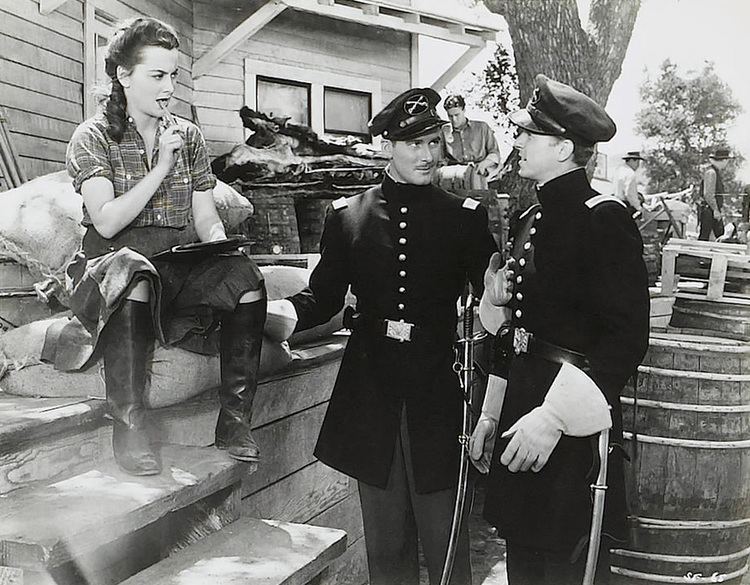
The Kansas Territory is bloodstained and war-torn, a victim of John Brown's (Raymond Massey) relentless crusade against slavery. Meanwhile, Rader has enlisted as a mercenary in Brown's army, which has been terrorizing the countryside with bloody raids. During Brown's attack on a freight wagon under the protection of the U.S. Army, Stuart and Custer capture Brown's injured son Jason (Gene Reynolds), and before dying, the troubled boy informs them about his father's hideout at Shubel Morgan's ranch in Palmyra. In disguise, Stuart rides into Palmyra, the center of the Underground Railroad, but Brown's men spot Stuart's horse with an army brand and he is captured and they take him at gunpoint to Brown. While trying to escape, Stuart is trapped in a burning barn, but is saved as Custer leads the cavalry to the rescue and drives Brown into seclusion.
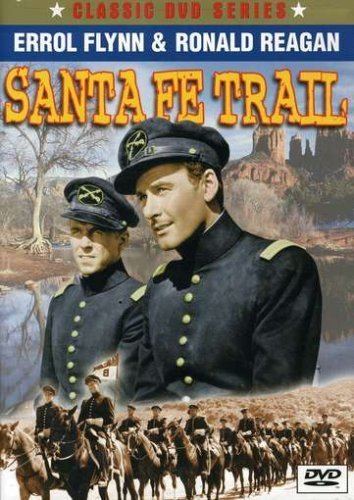
Three years go by to 1859. Believing that Brown's force has been broken, Stuart and Custer are sent back to Washington, D.C., where Stuart proposes to Kit. However, far from being defeated, Brown is planning to ignite war by raiding the arsenal at Harper's Ferry, Virginia. When Brown refuses to pay Rader for his services, Rader rides to Washington to alert Stuart of Brown's plans, and the troops arrive just in time to crush the rebellion. Brown is then tried for treason by the state of Virginia, and hanged. The movie ends with Stuart and Kit being married.
Cast
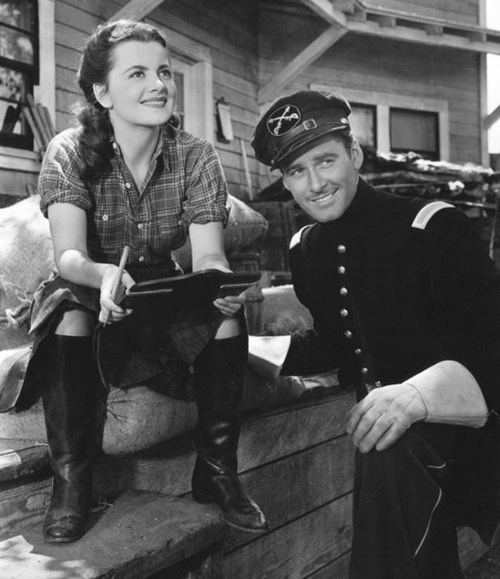
Depictions
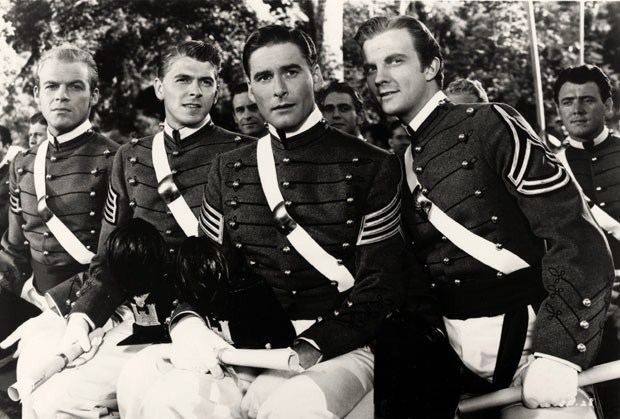
Massey's John Brown eagerly endorses breaking apart the union of the United States. The movie was made on the eve of the United States' entry into World War II, and its tone and political subtext express a desire to reconcile the nation's dispute over slavery which brought about the American Civil War and appeal to moviegoers in both the southern and northern United States. The American Civil War and abolition of slavery are presented as an unnecessary tragedy caused by an anarchic madman. The heroic protagonists such as Flynn's Jeb Stuart and Reagan's Custer seem unable to conceive how the issue of slavery could place them at odds in the near future, even though by 1859 hostility between the pro/anti-slavery states had reached a boiling point.
Black people are presented as passive and clueless; slaves brought by John Brown's Underground Railroad to the North are merely following orders of the abolitionists, without any motive to flee slavery. They muse about the good old times when they lived happily in the south. Trapped in a burning shed, they need to be rescued by a white man.
This film takes substantial liberties with the historical facts:
Production
At one stage Randolph Scott was mentioned for the lead. However it soon became a vehicle for Errol Flynn and Olivia de Havilland.
John Wayne was mentioned as a possibility for Flynn's costar.
Dennis Morgan was originally announced for the role of George Custer. Van Heflin was signed to play the villain following his success on Broadway in The Philadelphia Story; it was his first movie since 1937. Morgan was borrowed to appear in Kitty Foyle and was replaced shortly before filming began by Ronald Reagan.
Filming started July 1940 although the shoot starting date was pushed back due to a re-emergence of Flynn's malaria.
The film is frequently confused with the Raoul Walsh movie They Died with Their Boots On, released the following year, in which Flynn replaces Reagan in the role of Custer and also features de Havilland as Flynn's leading lady.
Release
The film was premiered in Santa Fe over a three-day festival, featuring a large number of celebrities. There were 250 guests and two special trains, with a total cost of $50,000 - shared between Warners and Santa Fe Railroad.
Box office
The film made a profit of $1.48 million.
Vitasound
In its initial release, Warner Brothers premiered this film in some large cities with an experimental sound system called Vitasound. Not a stereophonic system as sometimes reported, Vitasound was intended to create a greater dynamic range in the reproduced sound in the theatre for battlefield scenes etc., or for dramatic music.
Vitasound employed a second, control, track along the line of the sprocket holes on the soundtrack side of the film. This control track consisted of a clear line on a black background that varied in width. If the width was greater than 0.04" then the soundtrack played as normal. At a width of 0.04" a relay operated connecting left and right speakers in parallel with the normal center speaker. As the control track width reduced further playback volume would be increased up to a maximum of 10 dB at a zero control track width.
(Source: IMDb) This system was unrelated to Disney's Fantasound system which had just been used for roadshow engagements of Fantasia, released 13 November 1940.
Availability and public domain status
Santa Fe Trail entered the public domain in 1968, after United Artists Television (then the owners of the pre-1950 WB library, inherited from Associated Artists Productions [a.a.p.]) failed to renew the copyright. As a result the film has been widely available on VHS, LaserDisc and DVD with varying picture and sound quality. It is also freely available to watch and download from sites like YouTube and the Internet Archive. In 1988 a colorized version was produced by Color Systems Technology for Hal Roach Studios, and released on VHS (VidAmerica, 1990). Turner Entertainment also released a higher quality VHS than was previously available (MGM/UA Home Video, 1998). Today, Turner's library is part of the television division of Warner Bros., the original distributor. Though not fully restored, higher quality editions have more recently been released in Germany on DVD (Intergroove, 2011) and Blu-ray (WME Home Entertainment, 2017).
References
Santa Fe Trail (film) WikipediaSanta Fe Trail (film) IMDbSanta Fe Trail (film) themoviedb.org
